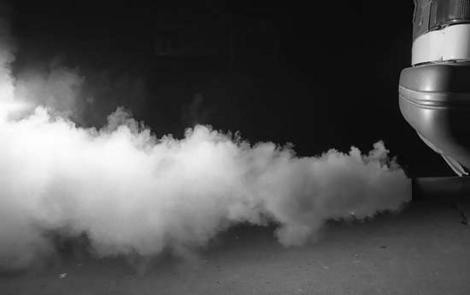The smoke coming out of your car’s tailpipe can tell you a great deal about the condition of the engine, cooling system, transmission and other parts of your car. If you aren’t already in the habit of checking for exhaust smoke, it is a good idea to check it at least once in awhile. Sometimes the clouds of blue, black or white smoke coming from your tailpipe will be hard to miss. Other times the smoke may be a bit more subtle and easy to overlook.
Check the Tailpipe
When you start your car, even if everything seems to be running normally, take a minute to walk to the back of the vehicle and look for smoke coming out of the tailpipe. The best time to do this is first thing in the morning. Smoke problems will manifest themselves first when the engine is cold. If there is a slight problem, you may not see any smoke once the engine has had a chance to warm up. As you are examining the back of your car, use your nose as well as your eyes. Stick a finger into the tailpipe and smell the discharge. If the smoke smells sweet or you detect the odor of antifreeze there could be a problem even if you do not see any white smoke.
White Smoke
If you see white smoke coming out of the tailpipe, that smoke means that your car has a leaking cylinder-head gasket or a cracked head gasket. If there is just a leak in the gasket, the problem should be relatively easy and inexpensive to fix, but if the problem is a cracked head gasket, chances are the repair will be a lot more complicated and expensive. If the problem is a leaking head-gasket cylinder you will see white smoke, because the faulty gasket is allowing air and fuel to enter the cooling system. As this mixture burns, white smoke is produced and exits through your tailpipe. If you are familiar with the location of the cylinder head gasket you can check it yourself, otherwise take the car to your mechanic and ask him to check the gasket for damage.
Other signs
Before you see white smoke coming from your tailpipe, you may have noticed other signs of trouble. One of the most common warning signs has to add water or coolant to your engine. Under normal circumstances, you should not have to add coolant or water to your car’s cooling system. If you find yourself checking the level and adding fluid on a regular basis, something is amiss. You may also find that your car has been overheating. This overheating is caused by the coolant leaking into the fuel, and it may manifest itself long before you see your first whiff of white smoke from the tailpipe.
Whether working on cars is a hobby or a cost-driven necessity, most DIYers and backyard mechanics are better off with inexpensive alternatives to expensive professional tools. There are some good tools that can interface with your computer, phone, or tablet.

Auto Troubleshooting: White Smoke from Tailpipe
by
Tags:

Leave a Reply